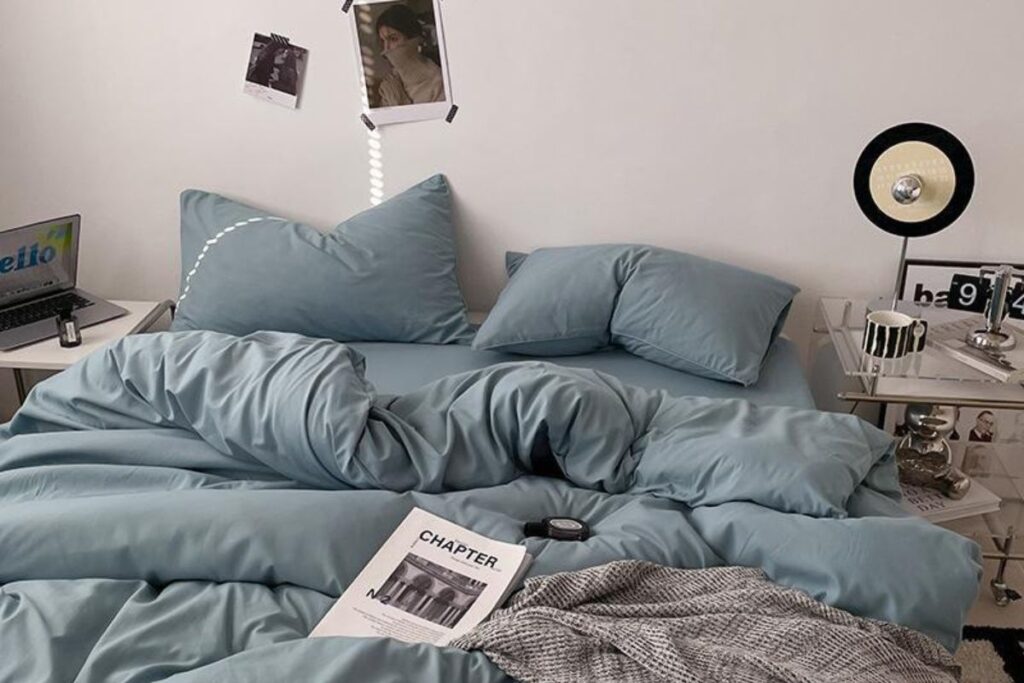Choosing a quilt cowl is more than a style. It’s the distinction between stressed tossing and restful nights. A long-lasting cowl needs to integrate softness, energy, and care-friendly qualities. With the proper choice, you may experience normal comfort without continuously changing bedding. Here’s what to keep in mind.
Fabric First
Fabric is the soul of any quilt cowl, shaping the way it feels towards your pores and skin and how long it lasts. Cotton is regularly the favourite for breathability, even as linen brings ethereal elegance, even though it feels barely coarse at first. Microfibre is mild and dries quickly; however, it lacks long-term resilience. The trick is locating material that balances softness with energy. Many families pick cotton as it combines practicality and consolation. For the ones yearning for hotel-like crispness, percale duvet sets Uk remain a pinnacle choice, imparting sturdiness without sacrificing that refreshing, cool-to-the-touch sensation.
Weave & Durability
The weave determines whether or not your quilt cowl stands robust or weakens too soon. Sateen offers a silky contact, best for luxurious seekers who love a clean waft throughout the bed. On the other hand, percale is cold, airy, and crisp, which makes it best for warmer evenings. Dense, strong, and tenacious, twill weaves regularly outsurvive lighter weaves even after several washings. Over time, a badly woven material may additionally lose its shape, thin out, or unravel. Durability additionally refers to the craftsmanship that is hidden in the one small, interconnecting thread, now no longer simply the fabric.
Thread-Count Myths
Thread dependency has been used for a long time because of the remaining degree of exceptionality, but it’s regularly misunderstood. A better quantity doesn’t always mean identical higher material. What, in reality, is the fibre energy and the way it’s woven? For example, a 400-thread-count cotton percale feels a long way sturdier and brisker than a 1,000-thread-count one crafted from susceptible fibres. It’s wiser to pay attention to exceptional weave and fibre to be swayed by exaggerated thread-dependent claims that regularly mask terrible craftsmanship.
Closure & Fastenings
The manner in which a quilt cowl closes is more crucial than human beings think. Buttons are traditional, including a charm; however, from time to time, they pop open at inconvenient times. Zippers, discreet and neat, keep the quilt firm, even though they could sense stiffness towards tender material. Ties convey an informal look, preserving the quilt’s anchor; however, they might also loosen if tugged. A suitable closure prevents the quilt from slipping or sliding within its cowl, saving you from waking up tangled in material.
Fit & Blanket Grip
A quilt cowl that doesn’t shape properly quickly will become a nightmare. Oversized covers permit the cover to bunch up, growing bloodless patches at nighttime. Too small and stuffed, the inner cover looks like a wrestling mat. The ideal in-shape ought to hug the cover, keeping a good unfold throughout the bed. Look for covers with inner ties or loops on the corners, which act as anchors. These tiny capabilities preserve the entirety stable, so you’re no longer waking at 3 in the morning to repair a lopsided blanket. Comfort lies within the fit as much as the cloth. A cowl that wraps your quilt flawlessly transforms each nighttime right into a cocoon of uninterrupted warm temperature and peace.
Care & Wash Tips
A long-lasting quilt cowl owes a part of its lifespan to the way you take care of it. Harsh detergents and warm washes can strip fibres of softness, leaving cloth dwindled or coarse. Most cotton covers thrive on moderate detergent and cooler cycles. Line drying refreshes the fabric certainly, and at the same time, as tumble drying on low, it works while you’re short on time. Ironing cotton or linen restores crispness, giving that inviting, hotel-fashion finish. Treating your covers lightly can pay off, as they’ll preserve their colour, texture, and form longer. Proper care turns regular covers into lasting investments.
Seasonal Adaptation
Covers for duvets have to alternate with the seasons. Lightweight linen or cotton covers permit air to flow, keeping you cool for the duration of the summer. Heavy substances like flannel offer warm temperature and luxury while the chills of iciness arrive. Some families preserve a couple of sets, swapping them at some point in the year, relying on the weather. This easy rotation makes an international distinction for your sleep. Your frame certainly adjusts to seasons, and your bedding ought to keep pace. Seasonal adaptability means your quilt covers continue to be practical, comfortable, and applicable irrespective of the climate.
Conclusion:
The proper quilt cowl is a reliable associate for restful nights. From cloth and weave to in shape and care, each detail contributes to comfort and durability. By being attentive to detail, you may select a cowl that feels soft, stands strong, and adapts to the seasons. Quality bedding is consolation, redefined.
Also, read: Taylor Soft Serve Freezer vs Professional Gelato Units

